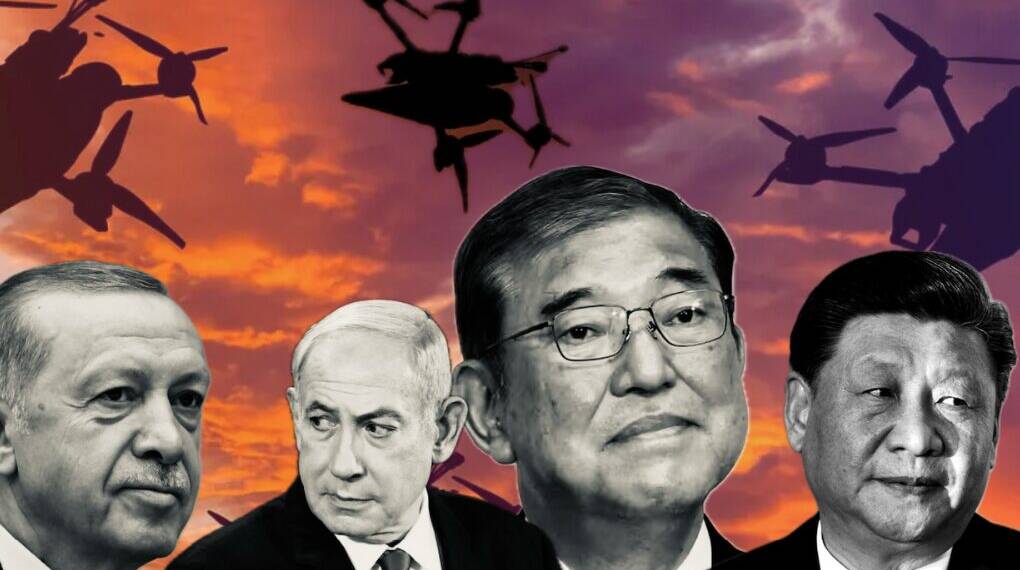Japan is stepping up its defense posture in the Indo-Pacific by investing heavily in drone technology amid rising security challenges posed by China and regional instability. The Japanese Ministry of Defense (MoD) is planning to request a budget exceeding 100 billion yen (about $670 million) for the fiscal year 2026 focused on mass deployment of military drones, according to government sources.
Japanese MoD’s Big Budget Push for Drones
To rapidly bolster its drone capabilities, Japan is considering acquiring Turkish-made Bayraktar TB2 drones, which gained international recognition due to their effectiveness in Ukraine’s conflict with Russia. These drones could be quickly integrated into Japan’s Self-Defense Forces to enhance intelligence, surveillance, reconnaissance (ISR), and combat operations. While these foreign systems may fill immediate needs, the long-term goal is to develop domestic production to avoid supply chain vulnerabilities.
Why Tokyo is Interested in Turkish Bayraktar TB2
Japan has openly admired the Bayraktar TB2, and previous reports indicated Tokyo’s interest in deploying them to protect strategic southern Ryukyu Islands near China. A Japanese naval officer commended Turkish drones for their critical ISR capabilities, highlighting ongoing 24/7 maritime surveillance missions and indicating Japan’s keen interest in detailed technical aspects of these UAVs.
Beyond the TB2, Baykar has developed more advanced drones, like the Bayraktar Akinci and TB3, designed for short takeoff and vertical landing (STOVL) operations, which Japan could also consider acquiring. Turkey’s STM Kargu kamikaze drones have reportedly drawn Japanese interest as well; these rotary-wing loitering munitions are valued for asymmetric warfare and anti-terrorist roles.
Israeli Heron-2: Another Strong Contender
In addition to Turkish drones, Japan is evaluating Israeli UAVs, particularly the Heron-2, which India also operates. A Heron-2 drone equipped for electronic warfare was recently spotted in Japan under a joint program with Kawasaki Heavy Industries. The Heron-2 offers long endurance, advanced sensors, and strike capabilities, capable of operating at altitudes up to 35,000 feet and staying airborne for 45 hours—an asset against China’s formidable air defenses.
The Bigger Picture: Drones in Japan’s Defense Strategy
Japan’s defense modernization strategy underlines drones as vital to countering North Korea’s missile threats, China’s maritime assertiveness, and Russian incursions near Japanese airspace. The policy favors quantity over quality, aiming to establish drone superiority through numbers. Investments in large drones like the U.S.-made MQ-9B SeaGuardian complement these efforts, providing enhanced maritime surveillance capabilities.
Dedicated Drone Task Force and Defense Buildup
The Defense Ministry established a drone task force in April 2025, emphasizing rapid drone procurement as part of a broader Defense Buildup Program. The 2026 budget request is anticipated soon, as Japan seeks to boost its unmanned capabilities for ISR, strike missions, and territorial defense, mitigating human risk in potential future conflicts.
Responding to Rising Chinese Military Activity
Heightened Chinese military activity around Japan’s airspace and waters has further underscored the strategic necessity of drone acquisition. Japanese lawmakers have advocated for drones to intercept unauthorized flights and improve monitoring of Chinese moves in the region.
Japan’s embrace of unmanned aerial systems is not only a tactical move to meet immediate defense needs but also part of a broader strategic vision to reshape its military for the next era of warfare. By pairing imported, combat-proven platforms with homegrown innovation, Tokyo is creating a layered capability—one that can respond quickly to present threats while evolving to meet future challenges. This dual-track approach also strengthens Japan’s defense-industrial base, fosters technological self-sufficiency, and enhances interoperability with allied forces like the United States and Australia. In the long term, such integration of UAVs into Japan’s defense architecture could enable seamless joint operations, rapid intelligence sharing, and coordinated responses across the Indo-Pacific, reinforcing Japan’s position as a pivotal security actor in a region marked by shifting power dynamics.








